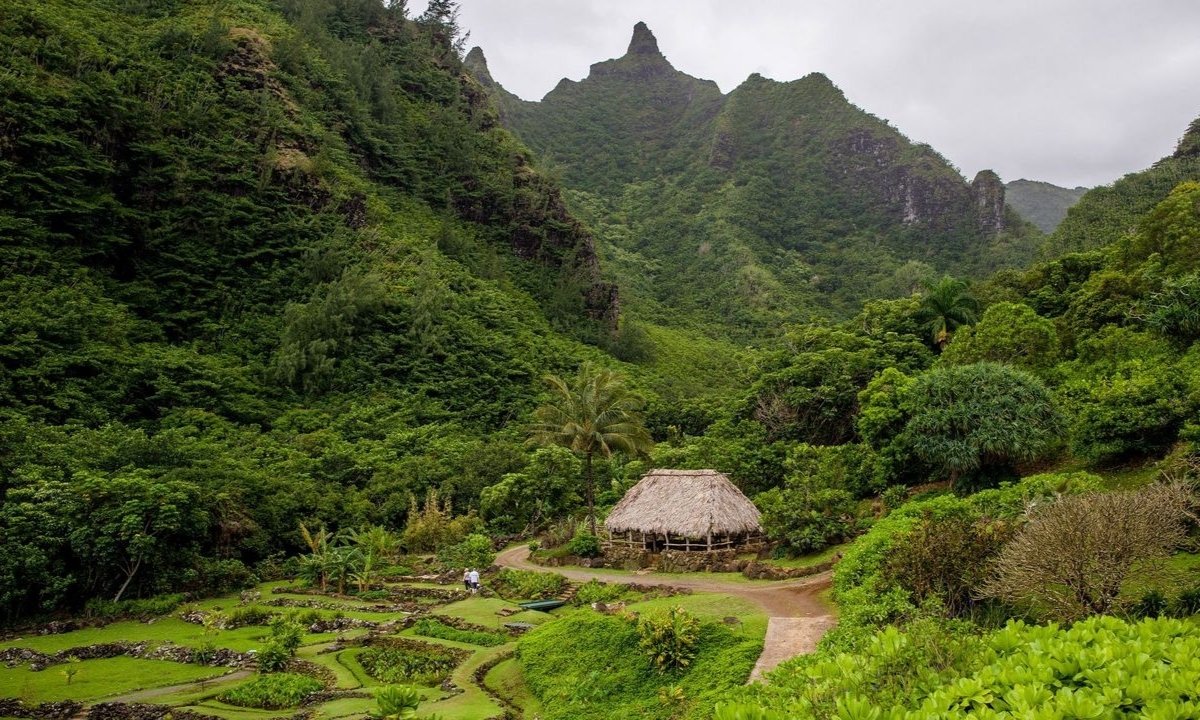Hidden Insights Of Hawaii’s Ancient Dryland Farms

Have you ever wondered what secrets lie beneath Hawaii's lush landscapes? Hawaii's ancient dryland farms hold fascinating stories of innovation and survival. These farms, dating back centuries, showcase the ingenuity of early Hawaiian farmers who thrived without modern technology. They used clever techniques to grow crops like sweet potatoes, taro, and yams in areas with little rainfall. By understanding these ancient methods, we can appreciate the resourcefulness of Hawaii's early inhabitants. Join us as we explore the hidden world of these remarkable farms and uncover the lessons they offer for sustainable living today.
Hidden Insights of Hawaii's Ancient Dryland Farms
Hawaii's ancient dryland farms are a testament to the ingenuity and resilience of its early inhabitants. These agricultural marvels, often overlooked by tourists, offer a unique glimpse into the island's rich history and sustainable farming practices. Let's uncover some of these hidden gems.
Kealakekua Bay
Kealakekua Bay, located on the Big Island, is not just a beautiful spot for snorkeling and kayaking. It also holds remnants of ancient dryland farms. These farms utilized the natural landscape, with rock walls and terraces to maximize water retention and soil fertility.
- Kealakekua Bay: Explore the ancient rock walls and terraces that tell the story of early Hawaiian agriculture. The bay's fertile soil and strategic location made it an ideal spot for growing crops like sweet potatoes and taro.
Kohala Field System
The Kohala Field System is one of the largest and most complex ancient agricultural systems in Hawaii. Spanning over 60 square miles, this area showcases the advanced farming techniques used by early Hawaiians to cultivate crops in dryland conditions.
- Kohala Field System: Wander through the vast network of fields, walls, and irrigation channels. This system highlights the ingenuity of ancient Hawaiians in managing water resources and soil fertility to sustain large populations.
Waimea Plains
The Waimea Plains, located on the Big Island, offer another fascinating glimpse into ancient Hawaiian agriculture. This area was once a thriving agricultural hub, with extensive dryland farms that supported large communities.
- Waimea Plains: Discover the remnants of ancient fields and irrigation ditches. The plains' rich volcanic soil and strategic location made it a prime area for growing staple crops like sweet potatoes and yams.
Ka'u Desert
The Ka'u Desert, despite its name, was once home to thriving dryland farms. Early Hawaiians developed innovative techniques to cultivate crops in this arid region, using rock mulching and other methods to conserve moisture.
- Ka'u Desert: Explore the ancient rock mulching techniques and other farming innovations. The desert's harsh conditions highlight the resourcefulness of early Hawaiian farmers in adapting to challenging environments.
Kalaupapa Peninsula
The Kalaupapa Peninsula, located on the island of Molokai, is known for its stunning cliffs and historical significance. It also holds remnants of ancient dryland farms that once sustained the local population.
- Kalaupapa Peninsula: Visit the ancient terraces and irrigation systems that dot the landscape. The peninsula's unique geography and fertile soil made it an ideal location for early Hawaiian agriculture.
Kona Field System
The Kona Field System, located on the slopes of Hualalai volcano, is another impressive example of ancient Hawaiian dryland farming. This area features extensive rock walls and terraces that were used to cultivate a variety of crops.
- Kona Field System: Walk through the intricate network of rock walls and terraces. The system's design showcases the advanced agricultural knowledge of early Hawaiians in managing water and soil resources.
Puna District
The Puna District, located on the eastern side of the Big Island, offers a unique look at ancient dryland farming practices. This area was once a thriving agricultural region, with extensive fields and irrigation systems.
- Puna District: Explore the ancient fields and irrigation channels that crisscross the landscape. The district's fertile soil and abundant rainfall made it a prime area for growing crops like taro and sweet potatoes.
Halawa Valley
Halawa Valley, located on the island of Molokai, is known for its lush landscapes and historical significance. It also holds remnants of ancient dryland farms that once supported the local population.
- Halawa Valley: Discover the ancient terraces and irrigation systems that dot the valley. The valley's rich soil and strategic location made it an ideal spot for early Hawaiian agriculture.
Kahana Valley
Kahana Valley, located on the island of Oahu, offers another fascinating glimpse into ancient Hawaiian agriculture. This area was once a thriving agricultural hub, with extensive dryland farms that supported large communities.
- Kahana Valley: Visit the remnants of ancient fields and irrigation ditches. The valley's fertile soil and strategic location made it a prime area for growing staple crops like taro and sweet potatoes.
Hawaii's Ancient Dryland Farms: A Legacy Worth Preserving
Hawaii's ancient dryland farms offer a glimpse into the resourcefulness and ingenuity of early Hawaiian culture. These farms, built without modern technology, thrived in challenging environments. They showcase sustainable practices that modern agriculture can learn from. Visiting these sites provides a deeper appreciation for Hawaii's rich history and the wisdom of its people. Protecting and preserving these ancient farms is crucial for future generations. They serve as a reminder of the importance of living in harmony with nature. Exploring these farms not only enriches your travel experience but also supports efforts to maintain Hawaii's cultural heritage. Next time you visit Hawaii, take the time to explore these remarkable sites. You'll gain a new perspective on the island's history and the enduring legacy of its ancient farmers.

